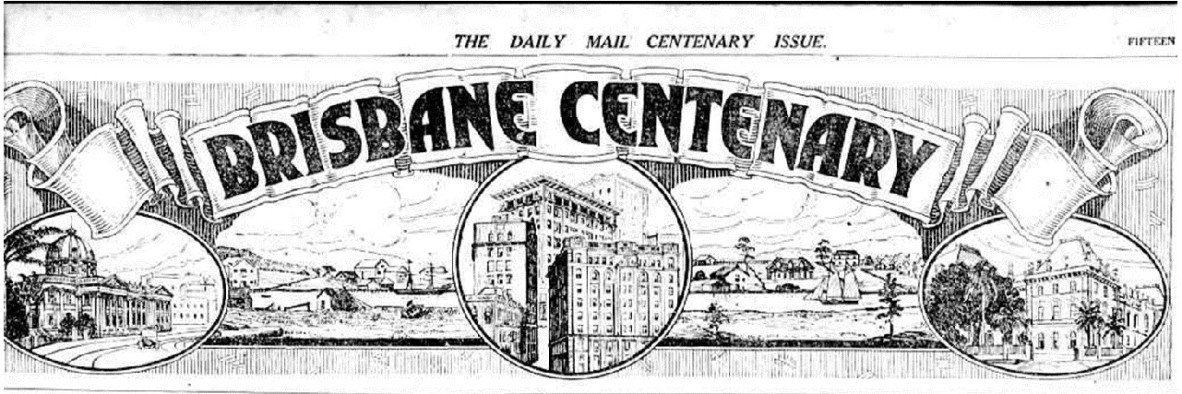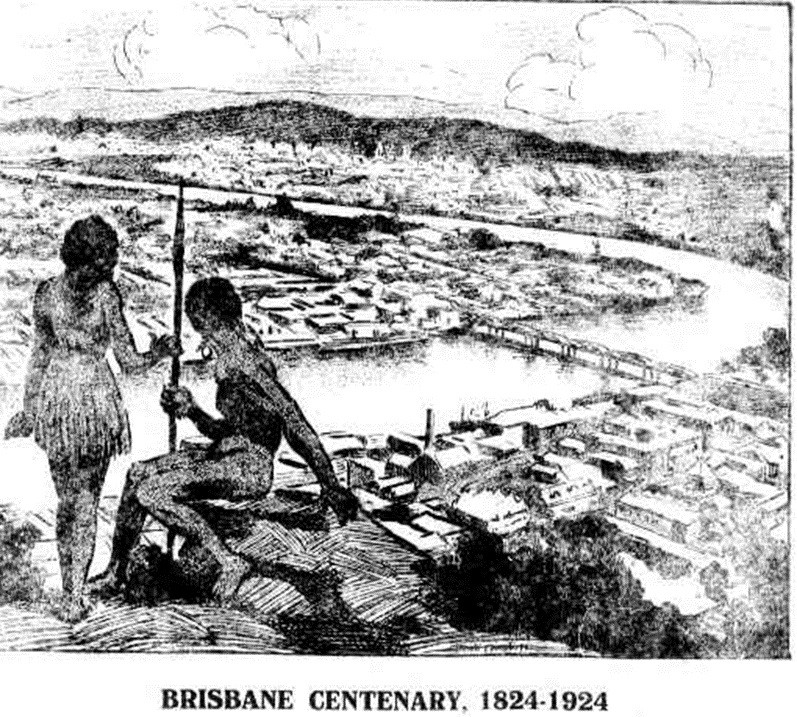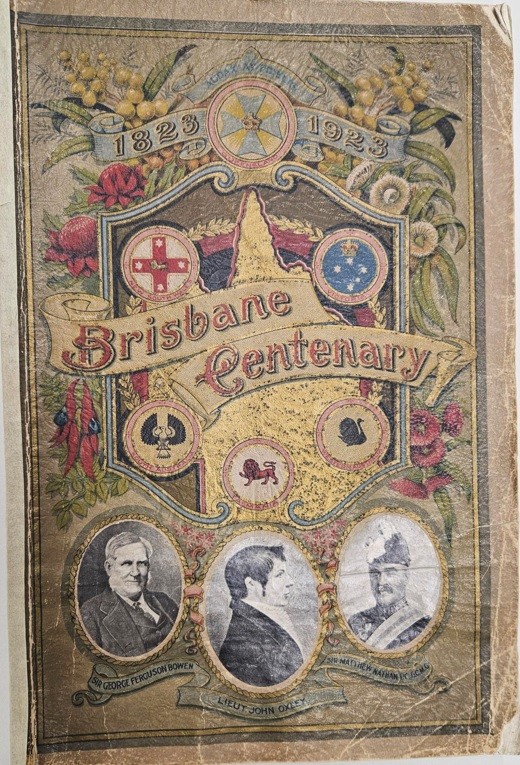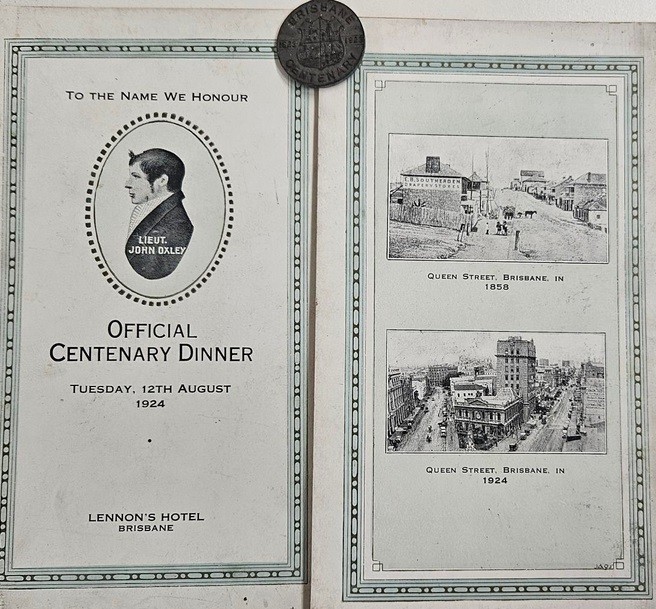Brisbane Centenary 1924: 6-10 August, Exhibition time
By Stephanie Ryan, Research Librarian, Information and Client Services | 17 August 2024
The opening
It was the most widely anticipated and exciting public time in Brisbane to that date. It was reported that neither the visit of the Prince of Wales nor the World War I peace celebrations attracted such a huge crowd as the opening event.
It was the commemoration of the 1824 foundation of Brisbane. The importance of John Oxley’s discovery of the Brisbane River in 1823, which was so decisive in selecting the site of Brisbane, was also acknowledged.
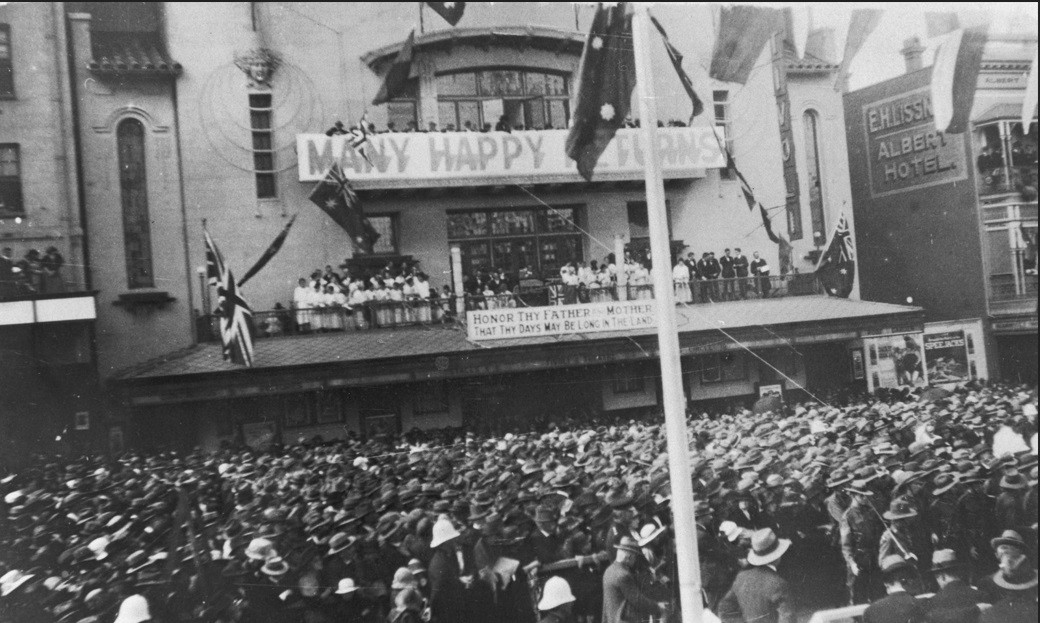
It was once the source of the main water supply in convict days. Later it was the site of the town hall and King George Square.
Timing the 10-day extravaganza with the Royal National Show (the Exhibition), when so many came to town and the days were warm without intense summer heat, maximised the appeal.
It was designed to be inclusive of and appealing to all social groups and ages with naval and aeroplane involvement, Aboriginal displays, parades, sport, competitions, balls, picnics, literary and musical events. Posters were widespread throughout the city, spreading the word and earnest fundraising was underway.
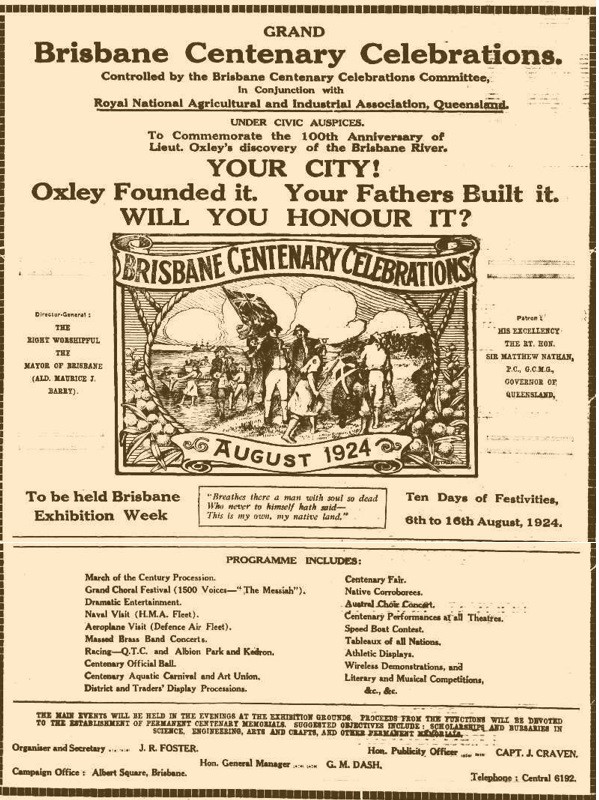
Acknowledging the early community
There was an appeal to patriotism and the word ‘native’ appeared frequently. It was used according to its original meaning relating to someone’s place of birth. There was a competition for the European native who had lived for the longest continuous time in Brisbane and the one born earliest in Brisbane. On both counts Mrs Emily Trundle was the winner. She had been born Amelia Dorothea Elizabeth Rode on 19 November 1840 to August Rode and Juliana Hoffman at Zion’s Hill (later Nundah), Moreton Bay on the banks of Kedron Brook, named by the German missionaries. By the time of the centenary, although she had lived elsewhere, she had moved a few kilometres up Kedron Brook to Lamington Avenue, Lutwyche. Moreton Bay was still a convict settlement at the time of her birth. Her father was among the group of German missionaries and first free European settlers who had come to Moreton Bay in 1838 to convert the Aboriginal inhabitants. They were unsuccessful and turned to farming. When Amelia married in 1861 she had already anglicised her name to Emily. Her husband Peter Trundle had arrived on the first immigrant ship to come directly to Moreton Bay, the Artemisia. They married in her father’s ‘Big House,’ Kedron House, the first house to be built in the Nundah area.

The Mayor, Alderman Maurice Barry, making a presentation to 83-year-old Mrs Emily Trundle acknowledging her as the oldest European native of Brisbane and as the oldest resident of Brisbane.
Her views were sought on several matters which were reported in the Daily Mail 5 August 1924 p9 . When she was born she said there were a dozen inhabitants at Zion’s Hill but ‘around us’ thousands of Aboriginal inhabitants. She continued, ‘Most of our supplies were obtained from Sydney at very infrequent intervals.’ She later added, ‘I have seen many wonderful changes, but I doubt if the progress of any decade has been so pronounced as that since 1914.’ Marion Oxley, a direct descendant of Surveyor-General John Oxley was also invited to the opening event, receiving a gift and accolades.
The Aboriginal people were included displaying their skills and a re-enactment of encounters with settlers in a more modern ‘native corroboree’. These were performed by a Barambah community at the Exhibition and the New Farm picnic at the instigation of the Brisbane Mayor who had been impressed by them when he visited their community.
One group excluded from acknowledgement in the foundation of Brisbane was the convict population. They were part of a ‘gloomy’ past it was chosen not to remember in any way other than in a university float in the parade. It was not the time to admit to convict heritage.
Souvenirs
There were plenty of mementoes of the 10-day event. The newspapers had special illustrated editions covering the main occasions and people as well as Brisbane’s history.
There was a souvenir book, Brisbane centenary, 1823-1923 and all children were presented with a commemorative medal.

Brisbane Centenary Medal
The official dinner at Lennon’s Hotel continued the theme of honouring Oxley and acknowledging the early settler period while comparing it with the current development.
The tone of these momentous events was one of huge hopes for the future despite those attending having survived the cataclysm of World War I, the 1919 pandemic and the difficult economic post war times in the recent past. Ahead of most of them was the Great Depression of 1929. They were also sandwiched between two World Wars. Emily Trundle had commented about growing up in Nundah and that she had heard of Brisbane but did not know where it was. Those isolated days were over.
This is just a small selection of the 1924 Brisbane Centenary 10-day program. There is more to explore in, Trove historical newspapers and the rich collection State Library holds. Check One search with the term Brisbane Centenary 1924
Have you any mementoes or stories from the Brisbane centenary? Tell us about them.
More information
One Search catalogue – https://onesearch.slq.qld.gov.au
Library membership – https://www.slq.qld.gov.au/services/membershi
Plan your visit – https://www.slq.qld.gov.au/visit
Ask a librarian - https://www.slq.qld.gov.au/services/ask-librarian
Comments
Your email address will not be published.
We welcome relevant, respectful comments.
